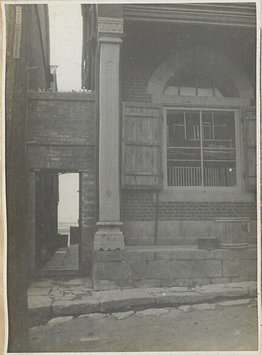Traveling Chinatowns: Migration, Proximity, and Violence across the Pacific

On a series of hot, humid evenings in early July of 1931, a wave of violence swept over the Korean peninsula under Japanese colonial rule. Houses were wrecked, housewares stolen, shops destroyed, residents beaten and stabbed to death—regardless of gender and age. It seemed that “everything Chinese” was to be wiped out. What drove this brutal street violence targeting the Chinese houses and people in the colony? What was it that allowed for a colonized people to commit deadly violence against other minority groups and claim the right to kill them? That “everything Chinese” was an accepted target for atrocious acts of brutality further illuminates the presence of “Chinese” as a category founded on sheer hatred against migrants. Arguably, behind what may appear to be the singular expression of xenophobia lay the transborder circulation of racial hatred and imaginings in the age of empires, in which Chinese migrants became a paradoxical figure: on the one hand deemed essential in the labor of imperial expansion, and on the other nullified by the violence of racial anxiety.
Tracing the origin of anti-Chinese riots in Korea under Japanese colonial rule (1910-1945), my book project Traveling Chinatowns: Migration, Proximity, and Violence across the Pacific situates “Chinatown” as an imaginative and material space within the global history of empire, labor migration, and violence. The surge of anti-migrant violence was not a phenomenon peculiar to Korea. In cities across the Pacific, a number of white workers throughout the late nineteenth and early twentieth centuries took to the streets and attacked Chinese migrants, charging that Asian “coolie” labor had destroyed the economy and violated the democratic ideal of Anglo-American settler communities. I do not consider these anti-Chinese riots in isolation. Though their specific contours varied and differed depending on local contexts, such racial imaginings of Chinese migrant figures—and attendant anti- Chinese campaigns—spread expansively across the Pacific, from San Francisco and Torreón to Jakarta and Incheon, forming a chain of scattered yet interconnected islands of racial violence.
By locating Japan’s Asian empire within the broader transimperial infrastructure of race and labor, this book delves into the structure of anti-migrant violence that emerged in colonial Korea. The book excavates understudied colonial archives of race and architecture, from public health reports to police documents, to shed light upon the transimperial linkages of anti-migrant racism and the hitherto underexplored role of archives themselves and architecture in rethinking the racial relations forged under colonial rule. While this study is the first comprehensive analysis of anti-Chinese violence in colonial Korea, it aligns with recent scholarship on Asian racialization within colonial contexts across North America, Australia, Latin America and the Caribbean, and beyond. Furthermore, the book contributes to the recent body of scholarship on the study of archives and architecture that interrogates the material and physical nature of racialization under colonial rule. Contextualizing “Chinatown” within the interconnected histories of anti-migrant racism and violence, especially between Asia and the Americas, the book further aims to uncover the closely intertwined narratives of Asian racialization across continents and their enduring impact in the present.
Tracing the origin of anti-Chinese riots in Korea under Japanese colonial rule (1910-1945), my book project Traveling Chinatowns: Migration, Proximity, and Violence across the Pacific situates “Chinatown” as an imaginative and material space within the global history of empire, labor migration, and violence. The surge of anti-migrant violence was not a phenomenon peculiar to Korea. In cities across the Pacific, a number of white workers throughout the late nineteenth and early twentieth centuries took to the streets and attacked Chinese migrants, charging that Asian “coolie” labor had destroyed the economy and violated the democratic ideal of Anglo-American settler communities. I do not consider these anti-Chinese riots in isolation. Though their specific contours varied and differed depending on local contexts, such racial imaginings of Chinese migrant figures—and attendant anti- Chinese campaigns—spread expansively across the Pacific, from San Francisco and Torreón to Jakarta and Incheon, forming a chain of scattered yet interconnected islands of racial violence.
By locating Japan’s Asian empire within the broader transimperial infrastructure of race and labor, this book delves into the structure of anti-migrant violence that emerged in colonial Korea. The book excavates understudied colonial archives of race and architecture, from public health reports to police documents, to shed light upon the transimperial linkages of anti-migrant racism and the hitherto underexplored role of archives themselves and architecture in rethinking the racial relations forged under colonial rule. While this study is the first comprehensive analysis of anti-Chinese violence in colonial Korea, it aligns with recent scholarship on Asian racialization within colonial contexts across North America, Australia, Latin America and the Caribbean, and beyond. Furthermore, the book contributes to the recent body of scholarship on the study of archives and architecture that interrogates the material and physical nature of racialization under colonial rule. Contextualizing “Chinatown” within the interconnected histories of anti-migrant racism and violence, especially between Asia and the Americas, the book further aims to uncover the closely intertwined narratives of Asian racialization across continents and their enduring impact in the present.
